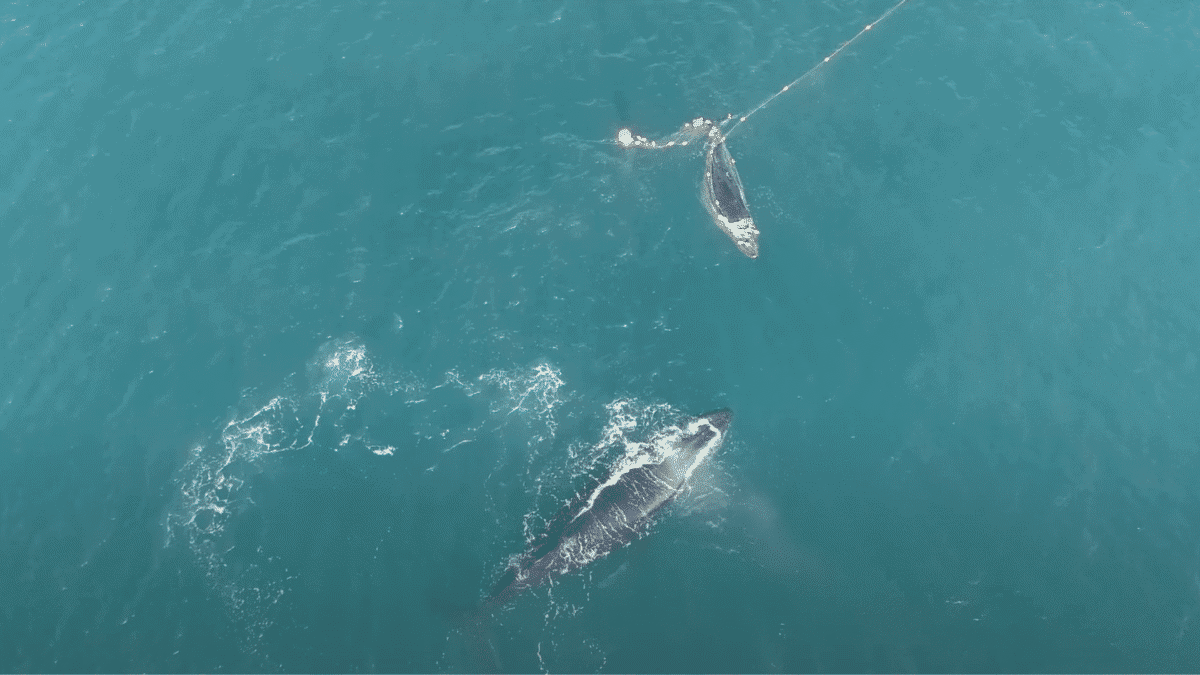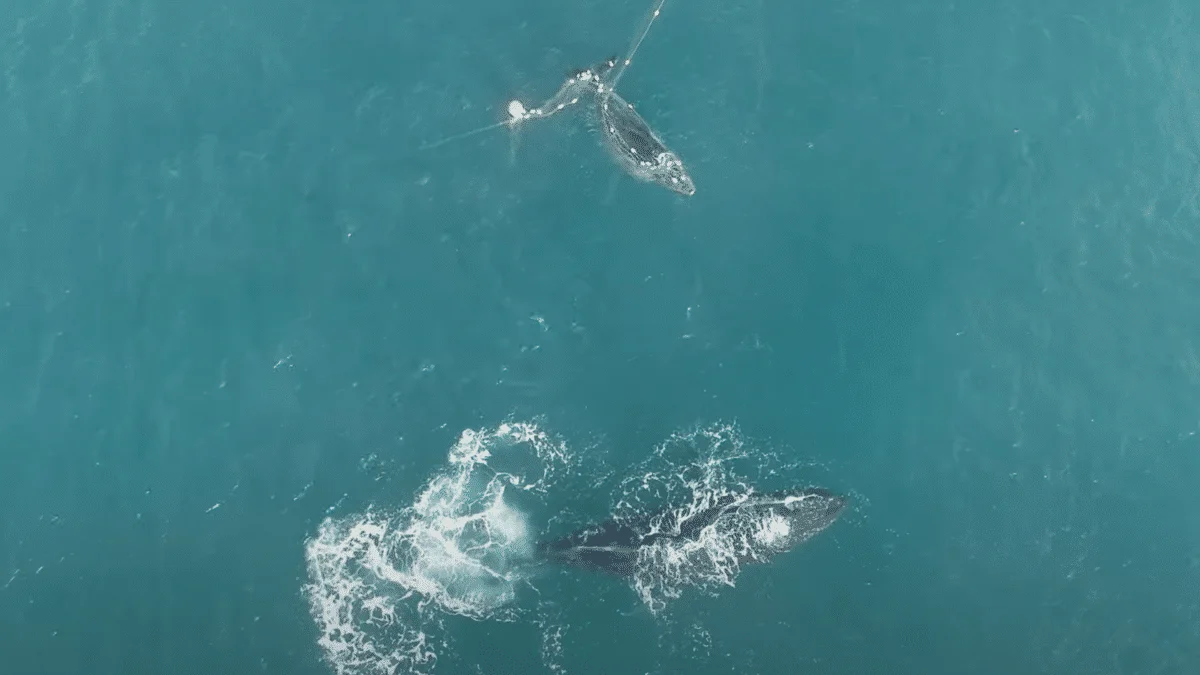A humpback whale calf was found entangled in shark nets off the coast of Australia. This prompted a successful rescue operation to free the young humpback from this potential fatality. This incident not only showcases the dedication to marine conservation in Australia but also spotlights the unintended consequences of shark nets on marine life. This article explores the intricate details of the rescue effort and examines the broader implications for wildlife protection and the efficacy of beach safety measures.

The Entanglement
The drama began when a young whale calf became entangled in shark nets. These nets, while intended to safeguard beaches from shark encounters, can sometimes become inadvertent traps for other marine animals. The calf’s struggle was not just against the physical barrier of the nets but also a race against time. Whales need to surface periodically for air.
The Rescue Operation
A team of brave and skilled individuals launched a rescue operation to free the trapped calf. The mission was fraught with risks.The proximity to the shore and the potential presence of sharks added layers of danger to an already delicate situation. Yet, the rescuers, equipped with specialised gear and a profound sense of purpose, worked tirelessly to untangle the whale.
The Science of Salvation
Whale rescues are complex and require a deep understanding of both the animals and the ecosystems they inhabit. Rescuers must be adept in the behaviors’ of whales, as well as the safe handling of the nets that bind them. The operation is a dance of precision and patience, as any sudden movement can exacerbate the whale’s stress and entanglement.
Entangled Baby Whale Rescue In The News
The Aftermath and Advocacy
Following the rescue, the conversation often turns to prevention and policy. How can we protect beachgoers and maintain the safety of marine life? The discourse includes promoting alternative solutions, such as drone surveillance or eco-barriers. The solutions can provide safety without endangering other marine species.
Balancing Human Safety with Marine Conservation

Shark nets are maritime safety devices installed near popular beaches to reduce the risk of shark attacks on swimmers and surfers. These nets are not designed to create a complete barrier between bathers and sharks but rather to catch and deter large, potentially dangerous sharks from approaching shorelines.
Typically, shark nets are submerged at a depth that allows some marine animals to swim under or over them without getting caught. However, they pose significant risks to marine life, including the very sharks they aim to manage. Sharks and other creatures, such as dolphins, turtles, and rays, can become entangled, leading to injury or death due to drowning or exhaustion.
The use of shark nets has become a contentious issue, with conservationists advocating for more sustainable solutions that protect both humans and the diverse species that inhabit our oceans.
Insights from a Shark Activist
We sought insights from shark activist, Frankie Chipparoni regarding this whale entanglement incident. According to Chipparoni, statistics indicate a troubling trend, with over 100 whales dying in the past seventy years due to the Kwazulu Natal, a region in South Africa, shark net operations alone. Chipparoni’s latest documentary, “The Last Shark“, highlights the dangers of shark nets and fishing gear, including drum lines, which frequently ensnare whales and sharks —a scenario all too familiar in Australian waters.
Despite these challenges, Chipparoni commends the relentless conservation efforts of groups like Sea Shepherd. She also shares that while adult whales sometimes manage to break free from shark nets, they often end up dragging these “ghost nets” along, which not only poses a threat to other marine life but also inflicts considerable stress and physical burden on the whales themselves.
The Takeaway
The entanglement of this whale calf offs continues the contentious debate around the intersection of human ingenuity and nature’s resilience. It reminds us that every life holds value and that our actions can tip the scales towards preservation or peril. As we navigate our own lives, let us draw inspiration from the whale’s struggle and triumph, remembering that we are all connected in the vast web of life that spans our blue planet.
You May Also Like
- Fantastic Whale Rescue Near Sicily Shows Human Empathy
- Watch: Orca Preys On Baby Humpback Whale
- How a Humpback Whale Entangled in a Heavy Anchor Was Saved!
- Watch: Komodo Dragon Devours Massive Moray Eel - March 25, 2024
- Watch As Lions Try Take Buffalo Down for Hours - March 12, 2024
- Mysterious Stingray Pregnancy: Is The Father A Shark? - March 12, 2024


